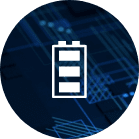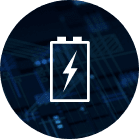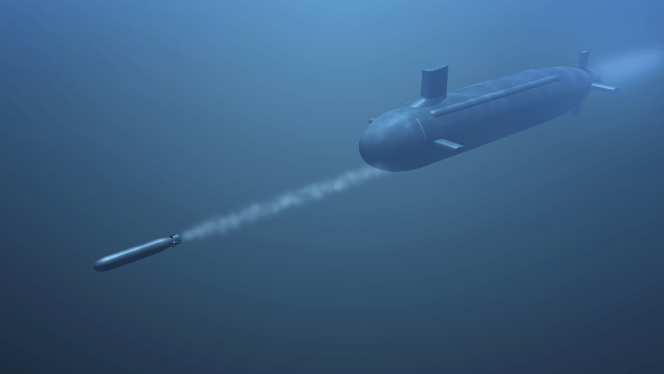


Batteries






Batteries




ABT
Advanced Battery Technologies S.A.
Design and Function
Our combat torpedo batteries range includes the two following types: SLST-C3 and SLSt-C1. The design of the SLST-C3 battery is based on the well-known SLST-C1 battery. Some important features have been modified in order to meet the demands of the improved torpedo version DM2A3:

Lower
battery
weight

More energy for
the auxiliary
battery section

Modification of
the centre of
gravity

Compatibility

Improved
resistance
against shock

Enhanced
Charging
Efficiency

Robust and
durable
construction

Optimum
reliability

Excellent
performance
both at low
and High
rate operation

Long
service life

High capacity
during
discharge

Enhanced
Charging
Efficiency
Ad

Analogue gas
tank pressure
sensor

Compressed gas
refilling
capability

Common test
connector for leakage/
activation sensor and
compressed gas
pressure sensors

Replaceable
pyrotechnical
activation
elements
Ad
Ad

Analogue gas
tank pressure
sensor

Low
gassing

Excellent
shock
resistance

Recyclable
Ad
The SLST-C1 battery is specifically designed for one-shot operation and long shelf life in non-activated condition. It consists of two independent battery sections. The auxiliary battery section includes 21 Ag-Zn cells and provides power for the electronic systems inside the torpedo.
Safety and Reliability
Safety
and Reliability
The SLST-C3 and SLST-C1 batteries provide our customers with the most reliable and safe combat battery for torpedoes DM2A3 and DM2 A1/ SUT/SST4 torpedoes available in the international market respectively. All components and sub-units, like cells, battery blocks, electrolyte tank, gas tank, activation unit (1W/1A pyrotechnical igniters) and safety electronic device, are embedded in elastic potting material.
Our combat batteries are designed to withstand the specified environmental loads like temperature, shock, and vibration and to serve the torpedo with excellent electrical performance. Both are maintenance free during the whole shelf lifetime.
Shelf Life
The minimum
expected and
specified shelf
life for both
batteries is
10years
With the ABT’s lifetime
extension program the
shelf life of both
batteries can be easily
extended up to
16years
The minimum expected and specified shelf life for both batteries is
10years
With the ABT’s lifetime extension program the shelf life of both batteries can be easily
extended up to
16years
Technical Features
- Sintered silver electrodes
- One moving part only needed for activation
- No maintenance during total shelf life
- All parts fixed by potting material
- Two independent electrolyte absorbing systems
- Aluminium battery housing
- Electronic safety system login
- Electromagnetic compatibility
- High capacity retention during shelf life

ABT
Advanced Battery Technologies S.A.
Design and Function
Both exercise type batteries are silver-oxide-Zinc-alkaline secondary batteries. The SLST-E1 type is designed and approved as an exercise battery for use in heavyweight torpedoes DM2A3, DM2A1, SUT and SST4, while the SLST-MK53 type is designed and approved as exercise battery to provide propulsion and auxiliary power for the MK37 torpedo.

Two Independent Battery Sections

Battery Cells Delivered In Pre-charged Condition

Individual Cells Must Be Activated For 1st Time Use

Plastic Container With Electrolyte Is Supplied

Batteries Used For Several Discharges

Two Independent Battery Sections

Battery Cells Delivered In Pre-charged Condition

Individual Cells Must Be Activated For 1st Time Use

Plastic Container With Electrolyte Is Supplied

Batteries Used For Several Discharges
Both batteries consist of a battery case which contains rechargeable AgO/Zn cells. The electrical contacts are placed on the rear endplate of the battery case. Old, used cells can be disconnected and removed from the casing and be replaced with new cells many times by the end user.
Safety and Reliability
Safety
and Reliability
Both batteries consist of a battery case which contains rechargeable AgO/Zn cells. The electrical contacts are placed on the rear endplate of the battery case. Old, used cells can be disconnected and removed from the casing and be replaced with new cells many times by the end user.
Shelf Life
Typical dry
storage life is
5years
Typical wet
lifetime is
12months
Typical dry storage life is
5years
Typical wet lifetime is
12months
Technical Features
- Storage Temperature -15°C to +35°C
- Storage Temperature (-dry-) 0°C to +35°C
- Operating Cell Temperature max. +95°C at the end of discharge
- Relative Humidity 45% to 75%
- SLST-E1: dummy propulsion cells can be supplied with the battery
- Both: spare cells of both types can be supplied with the battery


